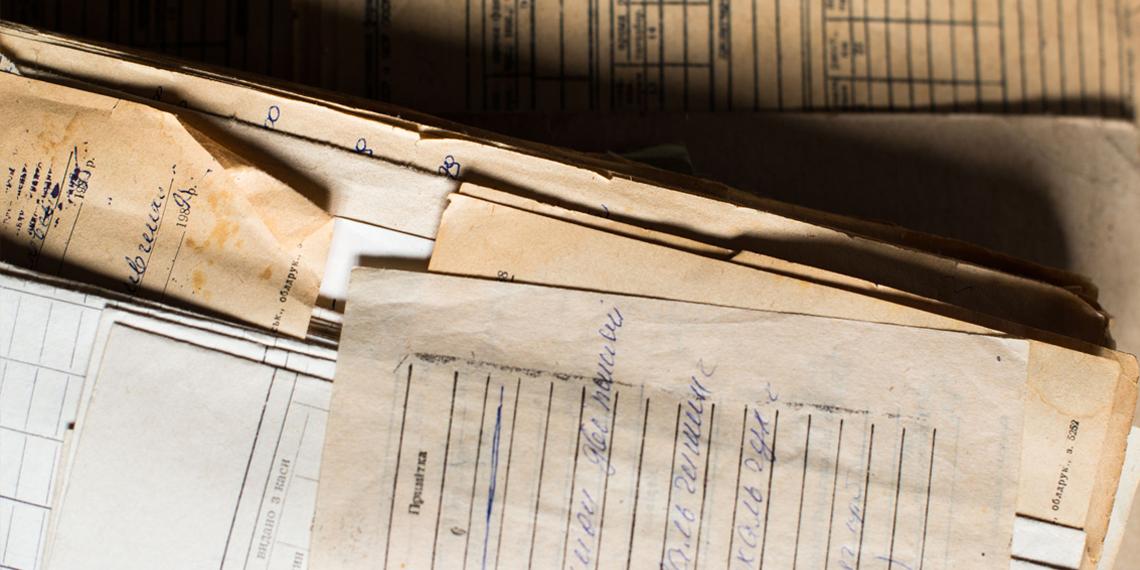Historical records explain current questions in big data research by Kris Inwood

Economics and history professor Kris Inwood describes himself as someone who likes to figure things out and discover why things happen. He says that “good research is like solving a jigsaw puzzle” and it is through big data research that he and his collaborators are assembling millions of pieces of historical information to help explain some of today’s most pressing questions about who we are and how we live.
While the research unites Inwood’s two major research areas of history - through the data sources - and economics - through the use of econometrics methodologies to analyze the data - the impact reaches far beyond, often extending into health and human behaviour. To effectively examine this wide range of topics and draw solid conclusions, the volume of data is crucial. Inwood must extract data from records that were never intended for this kind of research, such as marriage certificates and military archives, and transform it into data sets that can be analyzed to tell a story, or in other words, complete the puzzle.
“It’s not that individuals don’t matter, but you need to look at patterns and to do this you need big data that describe those populations at a time when there was no government agency collecting data,” he said. “You need to look for sources of information that were being collected for people for whatever reason and repurpose it.”
During his time looking at historical records, Inwood’s work has literally spanned the globe, conducting research with experts and data from Guelph to Australia. One of his local studies investigated the evolution of women’s property rights and financial independence. For this project, he looked at wills, testaments and property assessments from 150 years ago, a time when a married woman could not legally hold property in her own name or take responsibility for debts because it was all held by her husband. The combination of fraud attributed to this debt rule and a greater social evolution gave way to a legal change permitting married women to own and control their own property. This was a catalyst for the advancement of women’s financial rights that also offered further benefits to families.
“After the law was passed, a woman could continue to control her own property even if she married,” Inwood said. “That made it easier for fathers to leave property to daughters. A husband could also feel comfortable leaving property to his wife in the event of his death rather than leaving it in someone else’s hands. The widow could remarry and still retain control, thereby protecting their kids. This caused inheritance patterns to change and we also saw an increase in property ownership by single women and widows. Today we have much more property that is jointly owned.”
Outside of Canada, Inwood has also investigated the changing impact of a high body mass index (BMI) on early death using health records from New Zealand from men born in the late 19th and 20th centuries. In this research, he and his collaborators found that the risk of early death due to a high BMI diminished over time, a finding not shown previously for historical populations. As well, Inwood is working with a Brazilian researcher to examine information in Canadian marriage certificates and census data to evaluate the extent to which people married within their social class, residential locations and church groups. This research is part of measuring social mobility as well as a larger scale project of comparing wealth distribution between Canada/US and Latin America, the former being much more equal.
These questions concerning wealth distribution, health and longevity, and economic status are not new, Inwood explains. There is an inherent connection between the challenges experienced across different borders and previous generations.
“All of these patterns that we devote energy to understanding were experienced in the past,” he explained. “The idea is to understand these processes not just for current populations but other populations. We look at other worlds in the past so that we can get a clearer picture of what does not change over time and what does.”
Inwood’s next big data puzzle will examine migratory waves undertaken by French Canadians between 1760 and 1914. Specifically, he will look at the impact this had on settlement patterns and socio-cultural interactions in shoring up and shaping identities. This research will help foster understanding of prior as well as current migratory patterns.